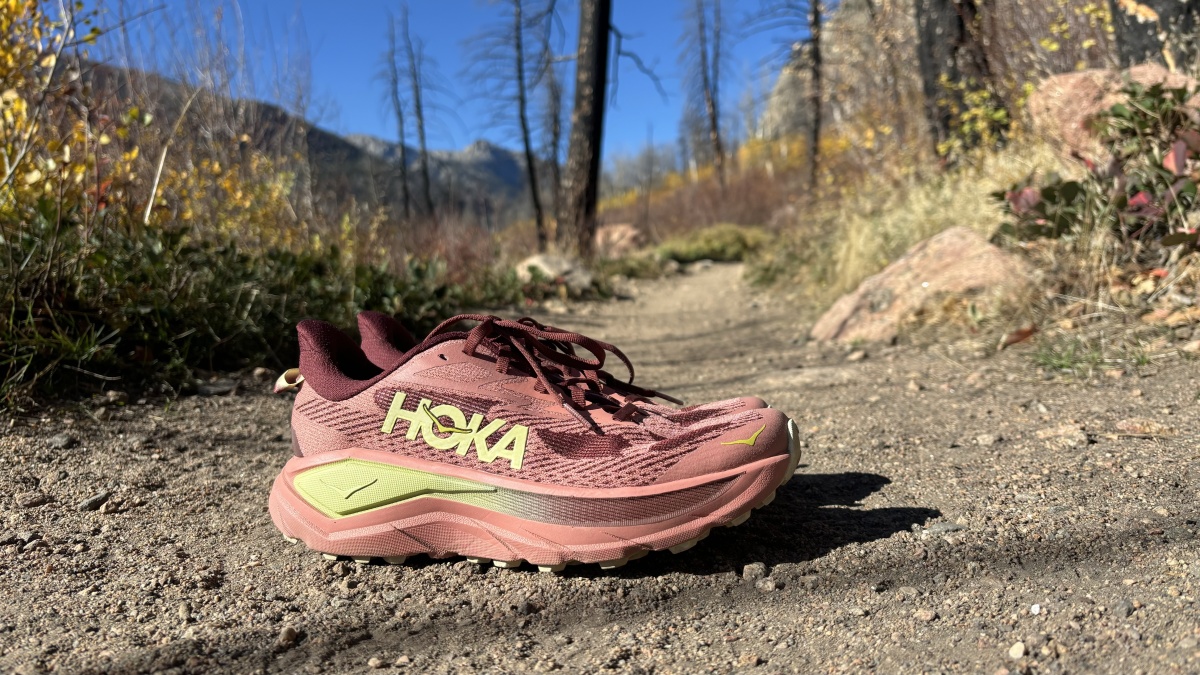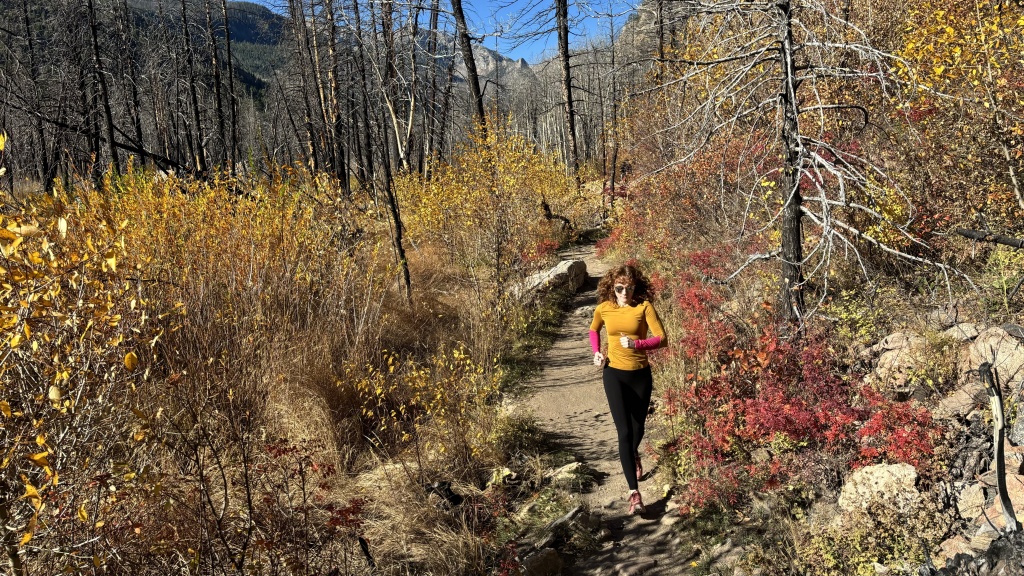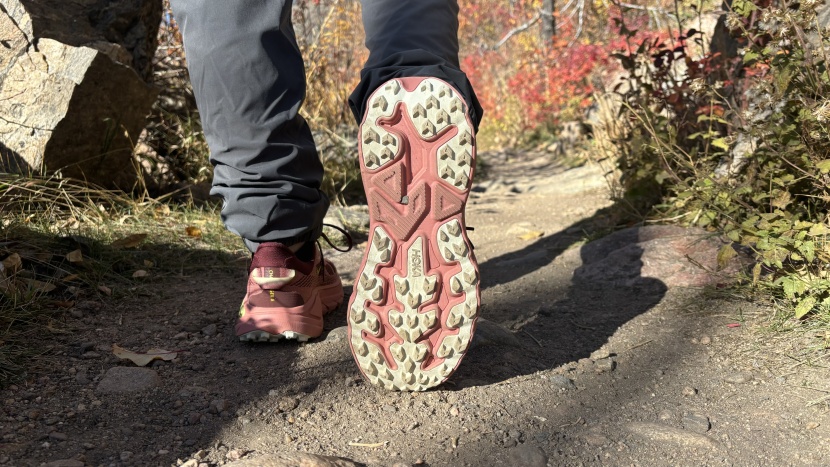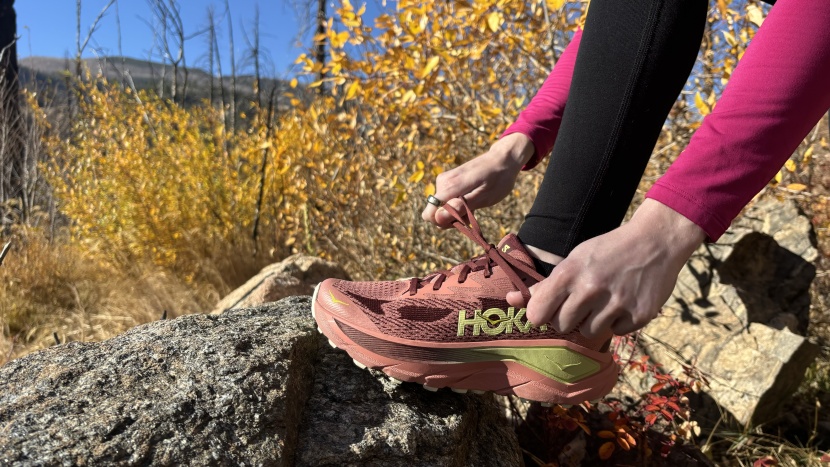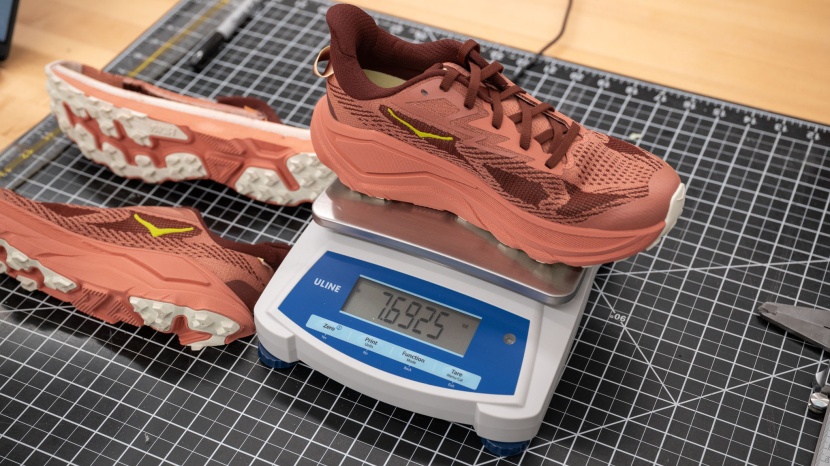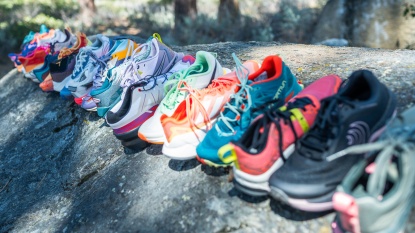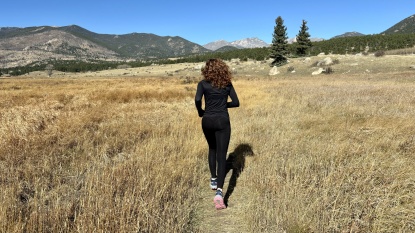
Our Verdict
Our Analysis and Test Results
We took these into the depths of the Colorado wilderness, but where they really shone brightest was on maintained gravel trails in town. They are more flexible through the midfoot compared to most trail running shoes and have plenty of cushion underfoot.
Comfort and Fit
The Challenger 8 stays true to what Hoka is known for - plush cushion underfoot. The shoes have a whopping 37 millimeters of cushion under the heel, which we measured in our Tahoe-based lab. We measured a heel-to-toe drop of 9 millimeters, which is obvious when wearing them. The pronounced rocker actively pushes you onto your toes, which can be a pro or con depending on your preferences. The upper is very breathable and light, and there is ample cushion around the ankle and tongue.
The Hoka Challenger has a standard toe box that isn't wide or narrow. However, our narrow-footed tester was able to cinch it down enough for a snug fit. It's also available in wide, should you need a little more wiggle room.
Stability
Because of the wide base, these shoes are fairly stable. Often, high stack shoes can cause trouble with stability, but we found the wide base to offset this enough. However, they aren't for every type of trail. These do best on smooth rolling hills and light gravel paths. They aren't the best choice for rocky surfaces or scrambling over boulders due to the soft sole and wide base.
Our main concern with stability is due to the rocker and heel-to-toe drop. In use, it feels as if the shoe is actively pushing you onto your toes, which is fine if you are running. Standing still, we didn't love this feeling. If you are new to this style of shoe, it can take some time to get used to it. If you are a tried and true Hoka wearer, it can feel pretty standard.
Traction
The Challenger 8 has beefy lugs that measure 3.7 millimeters deep. The rocker paired with the soft midsole lends these shoes better traction on hard-packed dirt and gravel. Loose trails and mud were a bit more challenging to navigate due to the wide base. Wide shoes often have this problem with loose terrain, as they can somewhat float across the surface rather than bite down into it.
We ended up enjoying these shoes as a road-to-trail crossover running shoe due to the soft midsole. After multiple runs where we started from our front door and made our way to local trail systems, we were happy with how they handled on concrete and gravel.
Foot Protection
Underfoot, there is plenty of cushion to keep your feet safe from jagged rocks and sticks. However, we have some concerns for the light mesh upper, should it get continually snagged or scraped, though we had no issues during testing. The toe cap has a flexible exterior lining that helped prevent any toe stubs during our runs. However, because these shoes are best suited for trails without rocky obstacles, you should be fine with the protection offered.
Weight
These shoes are among the lightest in our lineup at just 7.69 ounces per shoe (US women's 6.5). They are notable light in use. The upper is minimal, with an open mesh to allow extra airflow. The thick midsole is made from compression-molded EVA, which is also notably light. Even after miles of running, we were happy with how light these felt.
Should You Buy the Hoka Challenger 8?
The Hoka Challenger 8 is a good choice for the right runner. They are well-suited for paths that aren't aggressive and primarily hardpack dirt. Our tester even liked these on concrete, so they would make a great choice for an urban runner who ventures off into the trail systems nearby. However, for any runs with loose dirt or rocks, you'll have better choices with more traction.
What Other Trail Running Shoes Should You Consider?
If you like the sound of a Hoka shoe, but this one isn't the right fit, the Hoka Torrent 4 is one of our all-time favorites for its well-rounded performance and accessible price point. Should you need the best traction, the La Sportiva Bushido III is more than capable.


